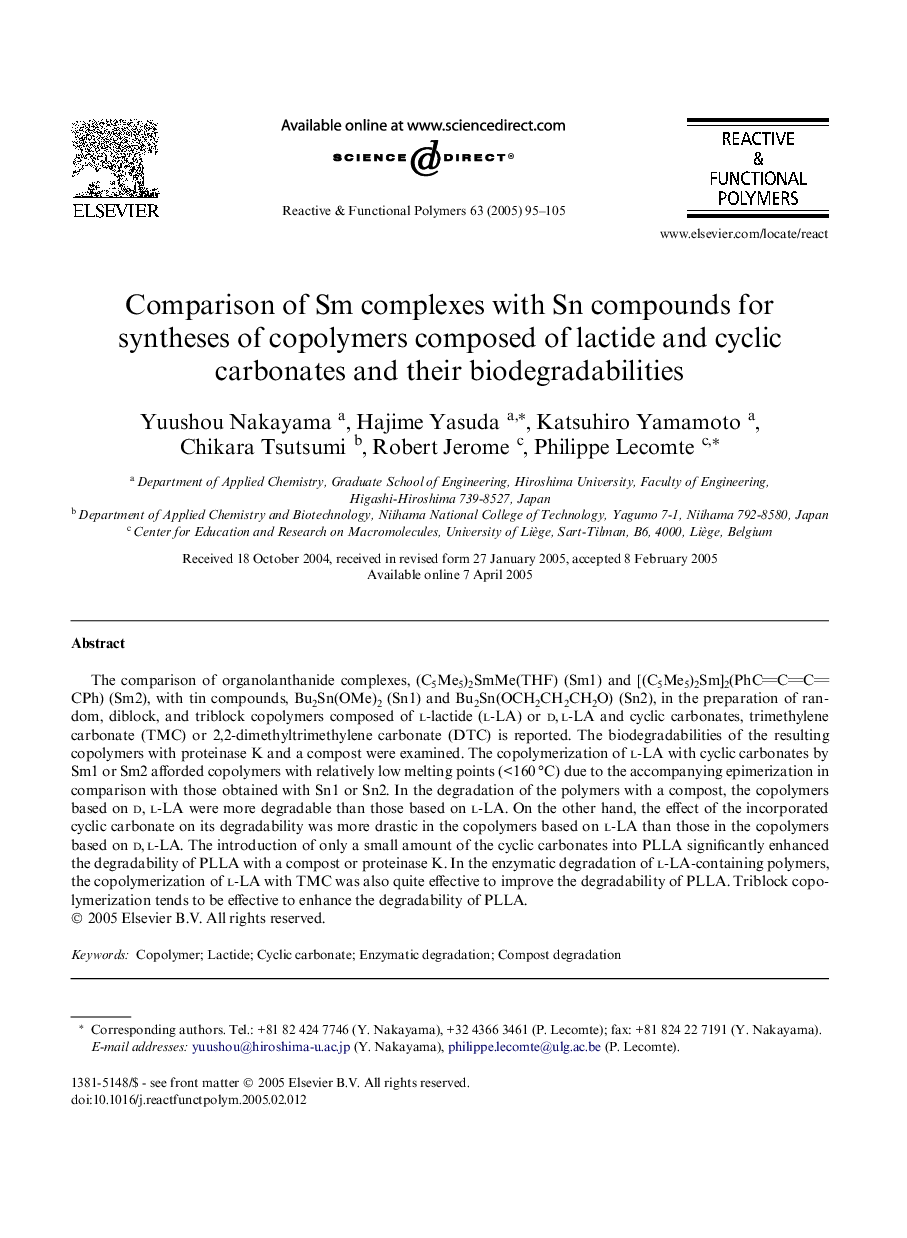| Article ID | Journal | Published Year | Pages | File Type |
|---|---|---|---|---|
| 9562571 | Reactive and Functional Polymers | 2005 | 11 Pages |
Abstract
The comparison of organolanthanide complexes, (C5Me5)2SmMe(THF) (Sm1) and [(C5Me5)2Sm]2(PhCCCCPh) (Sm2), with tin compounds, Bu2Sn(OMe)2 (Sn1) and Bu2Sn(OCH2CH2CH2O) (Sn2), in the preparation of random, diblock, and triblock copolymers composed of l-lactide (l-LA) or d, l-LA and cyclic carbonates, trimethylene carbonate (TMC) or 2,2-dimethyltrimethylene carbonate (DTC) is reported. The biodegradabilities of the resulting copolymers with proteinase K and a compost were examined. The copolymerization of l-LA with cyclic carbonates by Sm1 or Sm2 afforded copolymers with relatively low melting points (<160 °C) due to the accompanying epimerization in comparison with those obtained with Sn1 or Sn2. In the degradation of the polymers with a compost, the copolymers based on d, l-LA were more degradable than those based on l-LA. On the other hand, the effect of the incorporated cyclic carbonate on its degradability was more drastic in the copolymers based on l-LA than those in the copolymers based on d, l-LA. The introduction of only a small amount of the cyclic carbonates into PLLA significantly enhanced the degradability of PLLA with a compost or proteinase K. In the enzymatic degradation of l-LA-containing polymers, the copolymerization of l-LA with TMC was also quite effective to improve the degradability of PLLA. Triblock copolymerization tends to be effective to enhance the degradability of PLLA.
Related Topics
Physical Sciences and Engineering
Chemistry
Organic Chemistry
Authors
Yuushou Nakayama, Hajime Yasuda, Katsuhiro Yamamoto, Chikara Tsutsumi, Robert Jerome, Philippe Lecomte,
